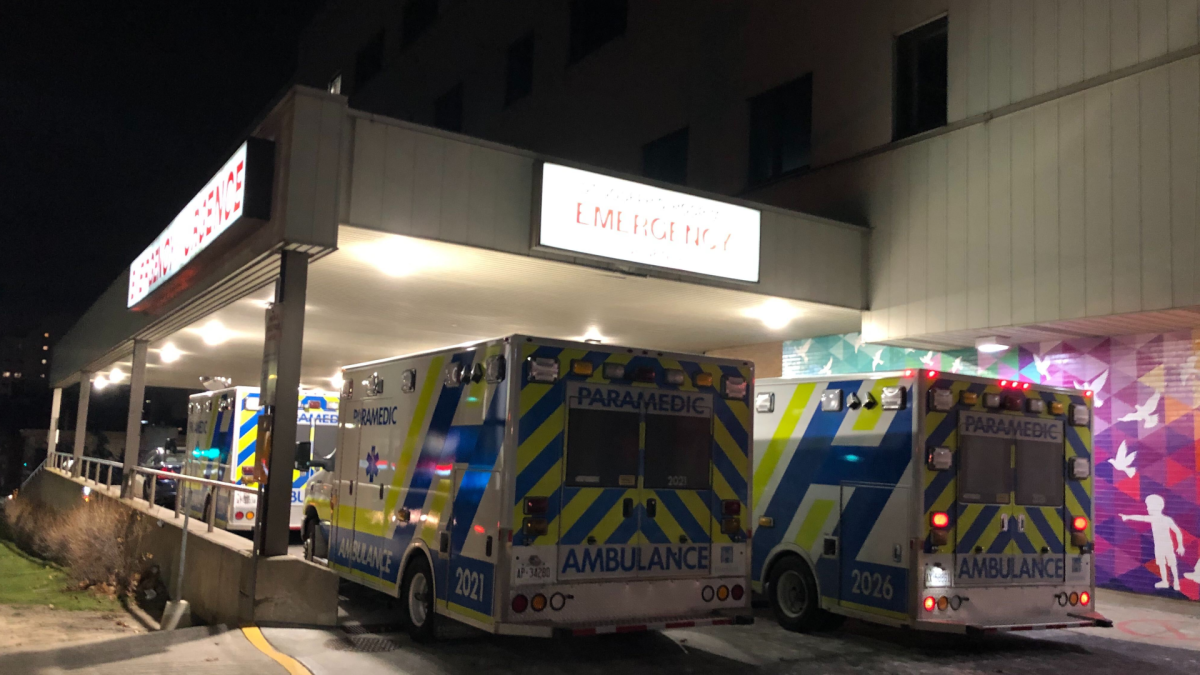Hamilton’s top paramedic is making a plea to residents to “make the right call” when needing medical attention amid significant increases in ambulance calls during the past seven months.

Michael Sanderson, chief of the Hamilton Paramedic Service (HPS), revealed the agency is responding to an average of 266 cases per day since the late spring, an estimated 43 more per day than during the first four months of 2021.
The emergency services boss says what’s been creeping into calls lately are “minor ailments” like stubbed toes and even a reported toothache, representing calls they wish to divert to other health-care partners like the hospital network clinics, private walk-ins and even online and telemedicine.
“There’s such a large variety of (calls) … (that are) not an emergency situation,” according to Sanderson.
“It may be an emergency to the individual not knowing what to do. Minor fractures – fractured fingers typically don’t require an ambulance response.”
The paramedic chief says code zeros – times when no local ambulances are available to respond to an emergency – have increased dramatically in the last six months, with 79 occurrences between July and Dec. 17, eclipsing the 20 the service had in the first six months between January and the end of June.
“Last year, we had 27 in total. It’s actually more than we had in the pre-pandemic year of 2019, which was 80,” said Sanderson of the 99 calls in 2021 to date.
“So definitely the code-zero rate is going up and it’s an increasing, challenging problem for us.”
Strokes, heart attacks, seizures, allergic reactions and poisonings are situations the service says are the time to request a paramedic.
Of those more serious calls, incidents related to suspected opioid overdoses in the city continue to rise to levels never seen before, particularly in months related to the pandemic.
Year over year, paramedics have responded to 330 more suspected overdoses compared to 2020, with two weeks still to go in 2021.
During three months of this year – June, August, and September – opioid incident calls increased more than 100 per cent compared to the same months last year.
Sanderson suggested the stress level of EMS teams is of concern as extra responsibilities including supporting immunization clinics, homebound immunization, doing COVID-19 testing, increased sanitizing requirements and the constant wearing of personal protective equipment are taking their toll.
To date, paramedics have also had to care for about 18,000 suspected COVID-19-positive patients.
“Having been at it for the last 21 months now, many of our paramedics are tired to the point of exhaustion,” said Sanderson.
“They’re stressed. Some to the point of cumulative mental health challenges and they’re anxious just like everybody else is in this community.”
The city currently has 420 full and part-time paramedics with 49 having been hired this year.
About 31 ambulances and four emergency response vehicles operate at peak levels on any given day while quieter nighttime hours typically see 21 ambulances and four emergency response vehicles.
Sanderson suspects recent surges in calls may have something to do with care that hasn’t been rendered through traditional facilities due to pandemic restrictions over the last 21 months.
“That’s when (people) get anxious through the pandemic, they’re just not sure what to do, and that starts to result in more 9-1-1 calls,” said Sanderson.
Compounding problems are the offload times at hospitals, where teams have had to make extended visits due to pressures at the drop-off point.
The city’s medical officer of health told Global News that hospitals at or near capacity have had to reduce or eliminate some procedures due to the pandemic which may account for an uptick in paramedic calls.
“We know that our health, human resources in the hospitals are very stretched,” Elizabeth Richardson told 900 CHML’s Good Morning Hamilton.
“I think you’ve heard that from Hamilton Health Sciences (HHS) and St. Joseph’s Hospital in terms of the number of people who are in hospital already now.”
The paramedics chief suggests there’s a “fine line” right now between potentially turning to the city and province for additional resources versus a need to decrease call volumes.
In 2021, the service saw about a seven per cent increase to its operating budget equating to about $28 million. The province currently contributes about $31 million to HPS operations.
“I think it’s pretty hard to win out the differences between the two,” Sanderson said.
“Clearly, our number of emergency calls is going up. Hospitals will tell us that the acuity of patients coming in is higher for … patients that we do have going in by ambulance.”










Comments